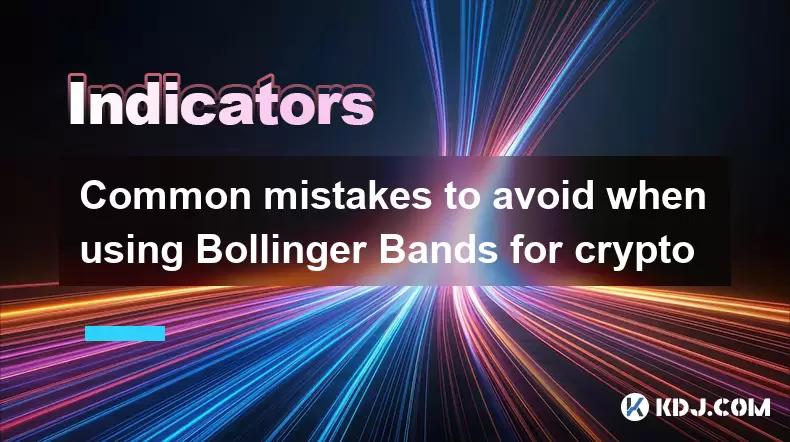-
 Bitcoin
Bitcoin $119,448.2396
0.27% -
 Ethereum
Ethereum $2,992.9919
0.78% -
 XRP
XRP $2.9074
1.58% -
 Tether USDt
Tether USDt $1.0001
0.00% -
 BNB
BNB $687.9097
-0.40% -
 Solana
Solana $161.5804
-0.47% -
 USDC
USDC $0.9998
0.01% -
 Dogecoin
Dogecoin $0.1948
-2.10% -
 TRON
TRON $0.3013
-0.08% -
 Cardano
Cardano $0.7286
-3.16% -
 Hyperliquid
Hyperliquid $47.3153
-3.81% -
 Stellar
Stellar $0.4543
-9.79% -
 Sui
Sui $3.8809
5.63% -
 Chainlink
Chainlink $15.6262
-0.55% -
 Hedera
Hedera $0.2368
-5.31% -
 Bitcoin Cash
Bitcoin Cash $501.2030
-0.80% -
 Avalanche
Avalanche $21.0650
-1.43% -
 UNUS SED LEO
UNUS SED LEO $9.0006
-0.39% -
 Shiba Inu
Shiba Inu $0.0...01310
-1.90% -
 Toncoin
Toncoin $3.0040
1.56% -
 Litecoin
Litecoin $93.8936
-1.20% -
 Monero
Monero $341.8918
1.27% -
 Polkadot
Polkadot $3.9087
-3.05% -
 Uniswap
Uniswap $8.9599
4.78% -
 Dai
Dai $0.9999
0.02% -
 Ethena USDe
Ethena USDe $1.0005
-0.02% -
 Bitget Token
Bitget Token $4.3954
-0.14% -
 Pepe
Pepe $0.0...01207
-2.26% -
 Aave
Aave $314.5223
1.72% -
 Bittensor
Bittensor $408.6988
2.76%
Common mistakes to avoid when using Bollinger Bands for crypto
Bollinger Bands help crypto traders gauge volatility and potential price reversals, but relying on them alone can lead to false signals and poor decisions.
Jul 14, 2025 at 03:21 pm

Understanding Bollinger Bands in the Context of Cryptocurrency
Bollinger Bands are one of the most widely used technical analysis tools in trading, including cryptocurrency trading. They consist of a moving average (typically a 20-period simple moving average) and two standard deviation lines plotted above and below the moving average. These bands help traders identify volatility, overbought or oversold conditions, and potential price reversals. However, many traders, especially newcomers to the crypto market, often misinterpret or misuse Bollinger Bands, leading to poor trading decisions.
Using Bollinger Bands as a Sole Indicator
One of the most common mistakes traders make is relying solely on Bollinger Bands without incorporating other technical indicators. While Bollinger Bands are excellent for measuring volatility, they do not provide reliable buy or sell signals on their own. For instance, a price touching the upper band does not always indicate a reversal or overbought condition. In strong uptrends, prices can ride along the upper band for extended periods.
- Misinterpreting price touches to the bands as trade signals can lead to premature entries or exits.
- Failing to confirm with other tools like RSI, MACD, or volume indicators may result in false signals.
- Not considering the overall market trend when interpreting Bollinger Band movements.
Ignoring Market Volatility and Band Width
Bollinger Bands automatically adjust to market volatility by expanding and contracting. However, many traders fail to take band width into account when making decisions. In low volatility environments, the bands contract, which can falsely signal a breakout or reversal. Conversely, in high volatility periods, the bands expand, and price movements within the bands may not be as significant as they appear.
- Assuming a breakout is imminent when bands contract can lead to entering trades without sufficient confirmation.
- Misreading tight bands as consolidation when they may simply reflect a low-volume period.
- Not adjusting trading strategies based on whether the bands are expanding or contracting.
Overreacting to Price Touching the Upper or Lower Band
Many crypto traders believe that when price touches or moves beyond the upper Bollinger Band, it's a signal to sell, and when it touches the lower band, it’s a buy signal. This is a misconception. In strong trends, especially in highly volatile crypto markets, prices can remain at or beyond the bands for extended periods.
- Selling too early when price hits the upper band in a strong uptrend can result in missed gains.
- Buying too soon when price hits the lower band in a downtrend can lead to losses.
- Failing to recognize momentum shifts before acting on price touches.
Misinterpreting Bollinger Band Squeezes
A Bollinger Band squeeze occurs when the bands contract tightly around the moving average, signaling a potential volatility breakout. However, many traders mistakenly assume the direction of the breakout. A squeeze indicates that a sharp move is likely, but it does not indicate whether the move will be up or down.
- Entering trades based on a squeeze without directional confirmation can lead to losses.
- Ignoring volume and momentum indicators during a squeeze can prevent accurate predictions.
- Assuming a squeeze always leads to a major move, when sometimes the price may simply continue sideways.
Failure to Adjust Settings for Crypto Market Characteristics
The default settings for Bollinger Bands are based on traditional markets and may not be optimal for cryptocurrency trading. The crypto market is known for higher volatility, 24/7 trading, and rapid price swings. Using the default 20-period SMA and 2 standard deviations may not capture the true dynamics of crypto price movements.
- Not experimenting with different timeframes to find what works best for a specific cryptocurrency.
- Using the same settings across all crypto assets, despite differing volatility profiles.
- Failing to backtest custom settings on historical data before applying them in live trading.
Frequently Asked Questions
Q: Can Bollinger Bands be used for all cryptocurrencies?
Yes, Bollinger Bands can be applied to any cryptocurrency chart. However, due to varying levels of liquidity and volatility, some adjustments may be necessary for optimal performance.
Q: Is it safe to use Bollinger Bands in a ranging market?
Bollinger Bands can be effective in sideways or range-bound markets, as price often oscillates between the upper and lower bands. However, false breakouts are common, so confirmation from other indicators is essential.
Q: How do I know when a Bollinger Band breakout is valid?
A valid breakout is often confirmed by an increase in volume and follow-through in the direction of the breakout. Using tools like MACD or RSI can help confirm the strength of the move.
Q: Should I use Bollinger Bands with candlestick patterns?
Yes, combining Bollinger Bands with candlestick patterns can enhance the reliability of signals. For example, a bullish engulfing pattern near the lower band may offer a stronger buy signal than the band touch alone.
Disclaimer:info@kdj.com
The information provided is not trading advice. kdj.com does not assume any responsibility for any investments made based on the information provided in this article. Cryptocurrencies are highly volatile and it is highly recommended that you invest with caution after thorough research!
If you believe that the content used on this website infringes your copyright, please contact us immediately (info@kdj.com) and we will delete it promptly.
- TAC Mainnet & Native Token Launch: A New Era for Telegram?
- 2025-07-15 18:50:12
- Ripple's RLUSD Stablecoin Eyes EU Expansion: Luxembourg Launch Under MiCA
- 2025-07-15 18:50:12
- Whales, DeFi Tokens, and DOGE: A New Era of Crypto Investments?
- 2025-07-15 19:10:12
- Bitcoin Yield Takes Center Stage: Function's $10M Raise & Galaxy Digital's Bet
- 2025-07-15 19:10:12
- ERC-20 Tokens & Ethereum Treasuries: GameSquare's Bold Move
- 2025-07-15 19:15:12
- ICO, BlockchainFX, Crypto Investment: The Buzz in the Big Apple
- 2025-07-15 19:15:12
Related knowledge

Advanced RSI strategies for crypto
Jul 13,2025 at 11:01am
Understanding the Basics of RSI in Cryptocurrency TradingThe Relative Strength Index (RSI) is a momentum oscillator used to measure the speed and chan...

Crypto RSI for day trading
Jul 12,2025 at 11:14am
Understanding RSI in the Context of Cryptocurrency TradingThe Relative Strength Index (RSI) is a momentum oscillator used to measure the speed and cha...

Crypto RSI for scalping
Jul 12,2025 at 11:00pm
Understanding RSI in the Context of Crypto TradingThe Relative Strength Index (RSI) is a momentum oscillator widely used by traders to measure the spe...

What does an RSI of 30 mean in crypto
Jul 15,2025 at 07:07pm
Understanding RSI in Cryptocurrency TradingRelative Strength Index (RSI) is a momentum oscillator widely used in cryptocurrency trading to measure the...

What does an RSI of 70 mean in crypto
Jul 13,2025 at 06:07pm
Understanding the RSI Indicator in Cryptocurrency TradingThe Relative Strength Index (RSI) is a widely used technical analysis tool that helps traders...

How to avoid RSI false signals in crypto
Jul 13,2025 at 06:21pm
Understanding RSI and Its Role in Crypto TradingThe Relative Strength Index (RSI) is a momentum oscillator used to measure the speed and change of pri...

Advanced RSI strategies for crypto
Jul 13,2025 at 11:01am
Understanding the Basics of RSI in Cryptocurrency TradingThe Relative Strength Index (RSI) is a momentum oscillator used to measure the speed and chan...

Crypto RSI for day trading
Jul 12,2025 at 11:14am
Understanding RSI in the Context of Cryptocurrency TradingThe Relative Strength Index (RSI) is a momentum oscillator used to measure the speed and cha...

Crypto RSI for scalping
Jul 12,2025 at 11:00pm
Understanding RSI in the Context of Crypto TradingThe Relative Strength Index (RSI) is a momentum oscillator widely used by traders to measure the spe...

What does an RSI of 30 mean in crypto
Jul 15,2025 at 07:07pm
Understanding RSI in Cryptocurrency TradingRelative Strength Index (RSI) is a momentum oscillator widely used in cryptocurrency trading to measure the...

What does an RSI of 70 mean in crypto
Jul 13,2025 at 06:07pm
Understanding the RSI Indicator in Cryptocurrency TradingThe Relative Strength Index (RSI) is a widely used technical analysis tool that helps traders...

How to avoid RSI false signals in crypto
Jul 13,2025 at 06:21pm
Understanding RSI and Its Role in Crypto TradingThe Relative Strength Index (RSI) is a momentum oscillator used to measure the speed and change of pri...
See all articles

























































































